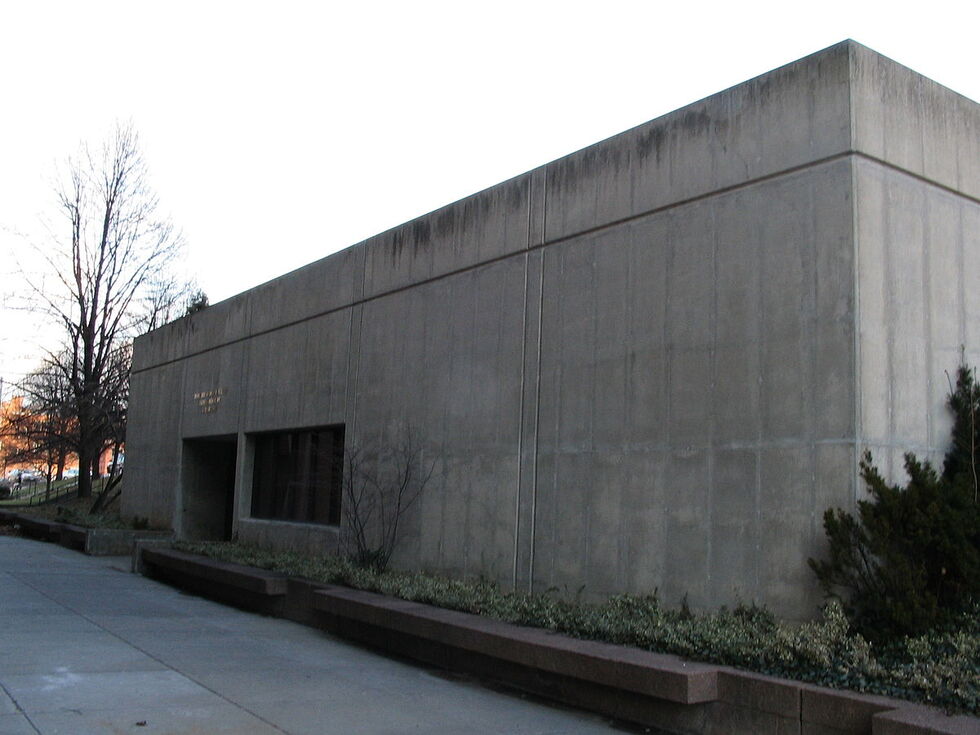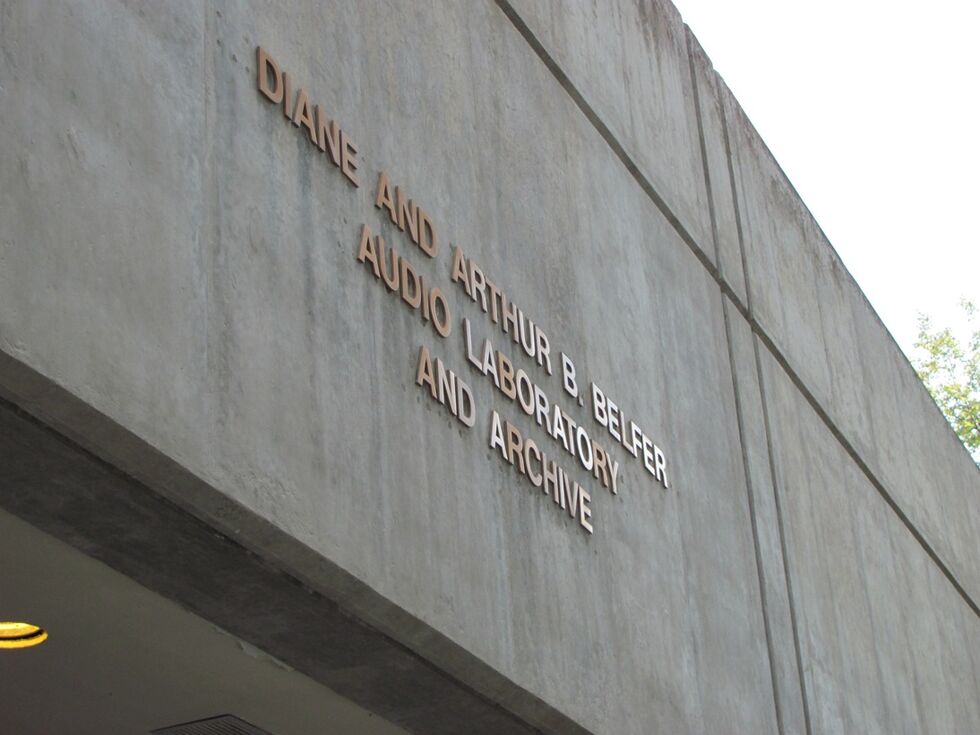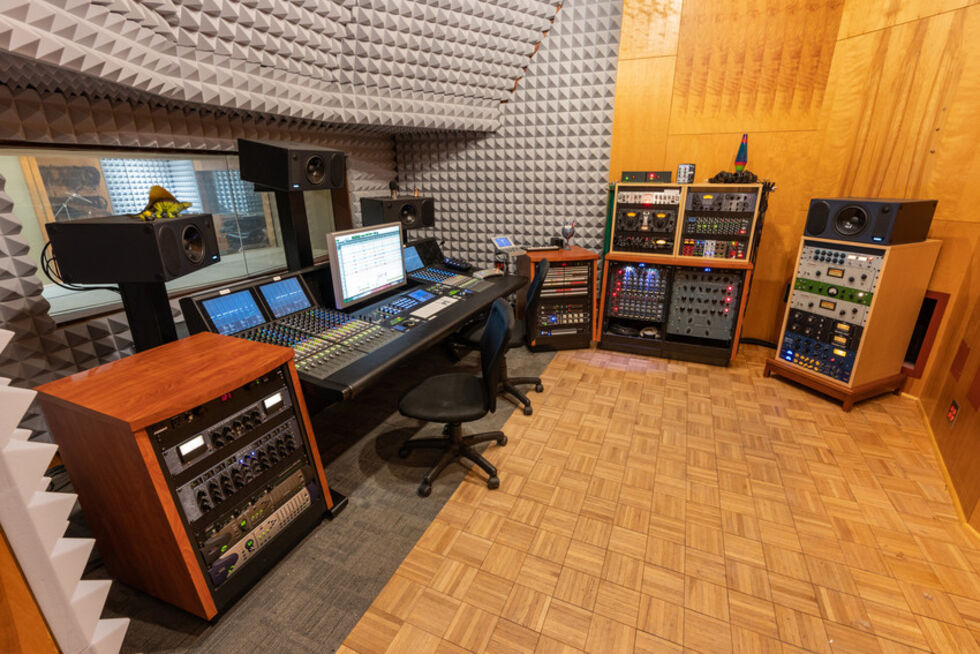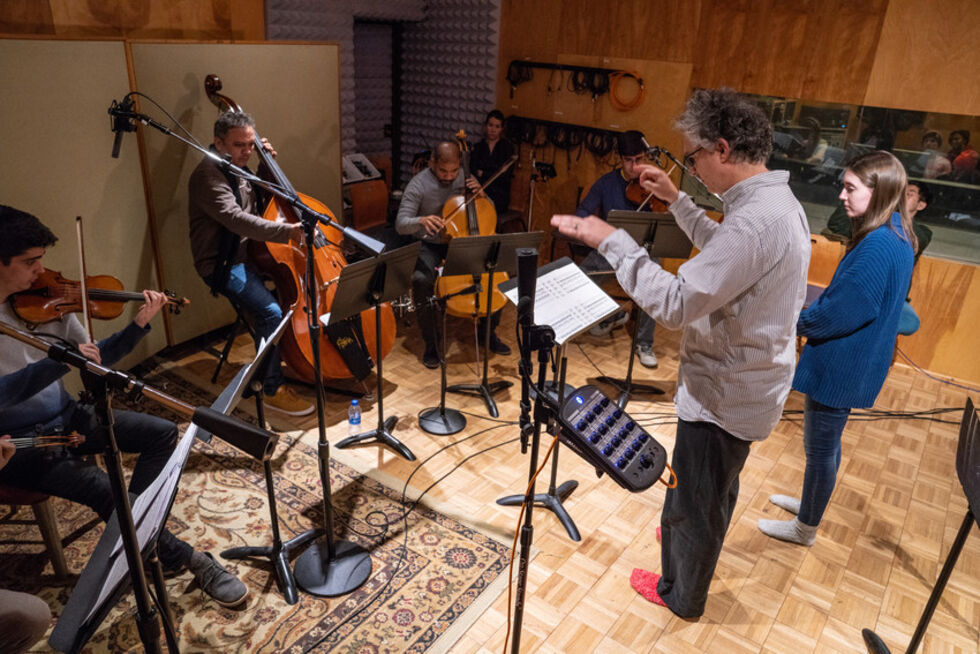Belfer Audio Archive
"Diane and Arthur Belfer Audio Laboratory and Archive" by Heuber-Breuer Construction Company , May 1981-1982
The Belfer Audio Laboratory and Archive maintains a historical collection of sound recordings to support the university curricula, especially in the areas of music industry and the performing arts, and other areas of research and teaching. The Belfer Audio Laboratory was the first building anywhere in the world to be dedicated to the restoration and preservation of audio recordings. The Belfer Archives now houses over 500,000 recordings in all formats, including cylinders, discs, and magnetic tapes. Particular strengths lie in the archive’s holdings of late 19th and early 20th century commercially released cylinders and phonodiscs of classical and popular performances. While the majority of its holdings comprise music recordings, the archive also contains early radio broadcasts, as well as thousands of spoken word recordings covering a wide range of personalities. Voices include Amerlia Earhart, Thomas Edison, Albert Einstein, Lenin, and Oscar Wilde, among others. In addition, Belfer maintains equipment capable of playing back a variety of formats, and performs preservation, digitization, and delicate restoration work on deteriorating recordings. The Laboratory and Archive includes an active instruction program utilizing sound recordings, sound playback equipment, and other material from its collections. One of the most inconspicuous buildings on campus, the building is almost entirely underneath the hill near Goldstein Alumni and Faculty Dining Center, making it more of a bunker than a building. The building is connected to Bird Library by an underground tunnel.
The Belfer Audio Laboratory and Archive was founded in 1963 with a collection of 150,000 recordings held off-campus under the leadership of Walter L. Welch. Funded by Diane and Arthur B. Belfer and the John Ben Snow Memorial Trust, the facility opened in 1982. During the 19-year span between acquiring the archive in 1963 and completing the building in 1982, Walter L. Welch, who served as the original director and curator, and his team had to use the basement of the Continental Can Building, a former factory owned by SU on East Water Street. William B. Storm, the archive’s original assistant director, stated that the objective for the facility is “to preserve sound for history, posterity’s sake, not to manipulate it in any way, although that would be very tempting with the equipment here.”
Arthur E. Belfer was born 1906 to a Jewish family in Cracow, Poland. Belfer began his business career as a feathers and down dealer. In 1939, Belfer traveled to the United States for a business trip four days after the Nazi invasion of Poland and realized that all his money had no value. He convinced a New York investor to purchase feathers and founded the Belfer Corporation which manufactured down sleeping bags for the U.S. Army. In 1953, Belfer expanded business operations into the foam rubber sector and the development of petroleum products. He founded the Belco Petroleum Corporation which focused mainly on petroleum exploration in Wyoming and Peru. Belco grew quickly and by 1962 was listed on the New York Stock Exchange and a Fortune 500 company. In 1983, Belco merged with what ultimately became known as the Enron Corporation. Belfer had numerous philanthropic activities which included the Belfer Institute for Advanced Biomedical Studies at Yeshiva University, the R. A. Rees Pritchett Chair in Microbiology at Cornell University, and founded the Belfer Center for Energy Research in Israel. Arthur Belfer passed away on May 2, 1993 in New York City.
SU Archives Buildings Online Site - General Belfer Information; "Belfer Audio Laboratory page." SU Libraries Website; Hoffman, F. (2005). Encyclopedia of Recorded Sound. Routledge; "SU Dedicates its Audio Laboratory." (1982). Herald-Journal Newspaper; Howe, M. (1993, May 4). “Arthur Belfer, 86, Philanthropist and Head of Petroleum Concern.” (1993, May 4). The New York Times; SU Photo and Imaging Center; Wikipedia Free Depository - Author ZeWrestler; Flkr - user lizto.



